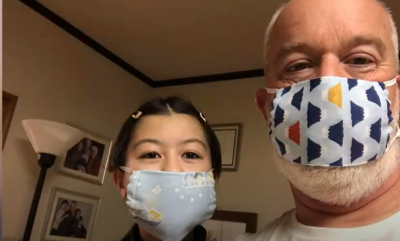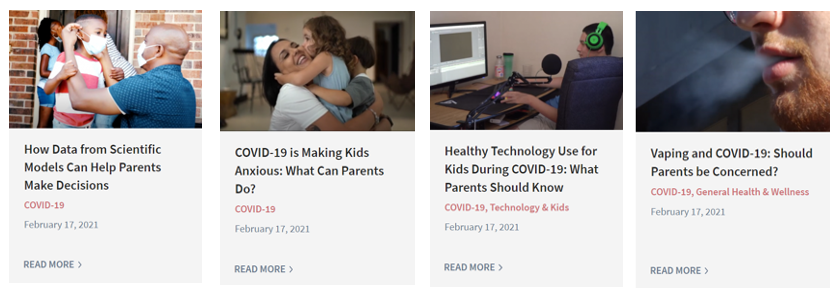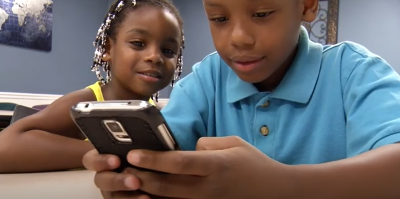Using digital media data to inform local TV news reports for parents during the COVID-19 pandemic
Authors: Alicia Torres, Isabel Griffith, Gabriel Pina, Claire Kelley, Sarah Kelley, and Isai Garcia-Baza
Introduction
The COVID-19 pandemic has created unprecedented hardships for families across the globe and has heightened emotional, economic, and educational stressors. In response to widening disparities during the pandemic, Child Trends was awarded a one-year RAPID grant from the National Science Foundation (NSF #2027470) to develop five local TV news reports—informed by data science research—to educate viewers about the science of virus transmission and prevention and arm parents with science-based strategies to improve child well-being during the pandemic. The project conducted “no contact” audience research using digital media data from sources including Facebook, Twitter, and Google Trends, to inform the development of news content that was aimed at reaching and engaging parents. Child Trends harnessed these novel data sources to better understand parents’ needs and challenges during the pandemic and to inform the development of messages that met parents’ concerns and needs with science-based solutions. The project then worked with Abriendo Puertas/Opening Doors, the largest community-based parenting program for low-income Latino parents in the country, to develop relevant video content for their 2021 curriculum.
The RAPID project builds off the Child Trends News Service (CTNS) project (NSF #1811007), which leverages local TV news to broaden access and exposure to science-based parenting information among Latinos and under-resourced families more broadly. Local TV news is still the most common place[1] for U.S. adults to get their news, and around half of adults who earn less than $30,000 a year and have at most a high school degree regularly watch local TV news[2]. Child Trends collaborates with a professional news company, Ivanhoe Broadcast News, to produce monthly news reports in English and Spanish. After four years of production, the project’s newsfeed, Positive Parenting, airs in nearly 60 percent of all U.S. TV markets, amassing an average of 46,330,713 million views per report.
The project has conducted extensive audience research to inform the design of effective messages that trigger stages of learning that lead to the adoption of science-based parenting behaviors. The project’s Randomized Control Trial (RCT) impact study (published results in review) found that news videos produced in this manner and delivered through the trusted channels of local TV news impact parents’ knowledge, the degree to which they value child development social science research, their intent to adopt the featured behaviors in the news reports, and their actual adoption of these behaviors.
Benefits of using data science to align messages with parents’ rapidly changing needs and challenges
In a global pandemic, when information is rapidly changing, it is critical for science communicators to understand the key challenges and perspectives of target audiences in order to develop relevant, timely messages that resonate[3]. However, traditional methods of conducting audience research, such as in-person focus groups and surveys, have not been feasible. As a complementary approach, science communicators can use digital media data, including data from web searches and social media posts, to understand and assess public opinion.
Using digital media data is a cost-effective, no-contact approach for gaining insights into audiences’ concerns in real time[4]. Researchers and journalists can gather tweets, Google searches, and public Facebook comments as users post them, which allows them to understand key challenges in a fraction of the time and cost it takes to field a traditional survey. In addition, the open-endedness of this medium allows for a “bottom up” approach, where the public’s needs and concerns emerge organically.[5]
Project implementation
To identify the five news report topics, the research team first conducted informal scans of public Facebook parenting groups in English and Spanish and qualitatively analyzed the posts for common themes and key words. The searches showed that parents were actively seeking information on how to help their children regulate their emotions and behaviors, such as increased biting, sleep issues, and unhealthy coping behaviors as a result of COVID-19 stressors. Parents also requested advice on how to support learning at home and were concerned about their children’s increased screen time. In addition, the team identified two topics that were prevalent on Twitter at the time: the effects of vaping on COVID-19 susceptibility and the usefulness of epidemiological models.
Using this information, Child Trends’ data scientists developed a web scraper that collected tweets in English and Spanish between March and May 2020 with relevant keywords. In addition, the study team used the Google Trends API (a tool that allows researchers to get information about how many people are searching for a keyword in Google) to determine which topics were increasing in popularity. Child Trends’ data scientists, in collaboration with child development and communication specialists, developed detailed digital media reports on each topic to inform interview questions to ask the researchers and parents featured in the news reports.
Key findings
The project used digital media scans in order to inform the development of television news reports to address parents’ emerging concerns. Overall, we found that the following selected topics had attracted substantial search traffic and conversations on social media:

How to Manage Kids’ COVID-19 Stress
Conversations on Twitter, Facebook, and Google Trends, in both English and Spanish, showed widespread concern around child mental health and stress. Parents were particularly concerned about increased mental illness and their children’s stress during remote learning.

There was substantial misinformation and misunderstanding around the role of epidemiological models in predicting COVID-19 infection and death rates, and there were many conversations regarding these models’ accuracy and legitimacy. These conversations were more prevalent in English, while Spanish language conversations referenced more accurate science-based findings.
Relax Screen Time Guidelines Right Now?
Many parents expressed concern about screen time for children during the pandemic and were confused by changing screen time guidelines, although this topic was more prevalent among English speaking web users.

Twitter conversations emphasized general concerns about vaping as a risk factor for COVID-19 infection, and searches related to this topic rose sharply during March 2020. This topic did not attract as much social media commentary as other topics and was more prevalent among English speaking users.
Keep Kids Learning at Home During COVID-19
Concern about how to keep children learning at home during the pandemic was of most interest to parents during the school year. Key concerns included academic deficits, social and emotional development, and problems with connectivity.
Repetition of messages at the community level: Virtual focus groups with low-income Latino parents informed additional “how to” videos
In addition to conducting digital data scans, Child Trends held four virtual focus groups on Zoom with Latino parents from the Abriendo Puertas/Opening Doors program. These focus groups aimed to understand how parents interacted with the news report content to inform their knowledge and practices and to explore what kind of additional information they needed to implement the featured behaviors. Findings from the focus groups informed the development of four additional “how to” videos, each 2–3 minutes long, on the COVID-19 topics identified above. These videos were incorporated into the Abriendo Puertas/Opening Doors 2021 curriculum aimed at promoting science-based parenting to support positive child development and learning.

Insights for the field
Understanding the needs, concerns, and values of key audiences is critical for designing effective science messages and content. The CTNS project employed digital media scans to conduct “no contact” audience research during the COVID-19 pandemic to inform news content aimed at supporting under-resourced families. Nielsen Research tracking data found that the RAPID news reports garnered 90 million views on average, nearly tripling the average number of views generated by the project’s pre-pandemic news reports.
Digital social media scans, however, do not provide information about people who do not post concerns and/or seek information through social media, and who have limited access to the internet. Researchers need to conduct direct audience research (e.g., surveys) with people who have limited internet access to supplement the information gathered through digital media scans.
In the future, researchers may want to explore systematic ways for incorporating audience research into the development of science communication content. Digital media data can enhance traditional methods for understanding audiences and public opinion and could be applicable across a variety of science communication and informal STEM learning projects.
[1] Matsa, K.E. and Liedke, J. (2021). Local TV News Fact Sheet. Pew Research Center.
[2] Matsa, K.E. (2018). Fewer Americans rely on TV news; What type they watch varies by who they are.
[3] Hornik, R. C., & Yanovitzky, I. (2003). Using Theory to Design Evaluations of Communication Campaigns: The Case of the National Youth Anti-Drug Media Campaign. Communication theory : CT : a journal of the International Communication Association, 13(2), 204–224. https://doi.org/10.1111/j.1468-2885.2003.tb00289.x
[4] Schober, M. F., Pasek, J., Guggenheim, L., Lampe, C., & Conrad, F. G. (2016). Social Media Analyses for Social Measurement. Public opinion quarterly, 80(1), 180–211. https://doi.org/10.1093/poq/nfv048
[5] Pasek,J., Yan, Y.H., Conrad, F.,Newport,F., Marken,S. The Stability of Economic Correlations over Time: Identifying Conditions under Which Survey Tracking Polls and Twitter Sentiment Yield Similar Conclusions. Public Opinion Quarterly, Volume 82, Issue 3, Fall 2018, Pages 470–492.
***Please note that full text versions of the references cited here can be accessed by InformalScience.org members via EBSCO.

